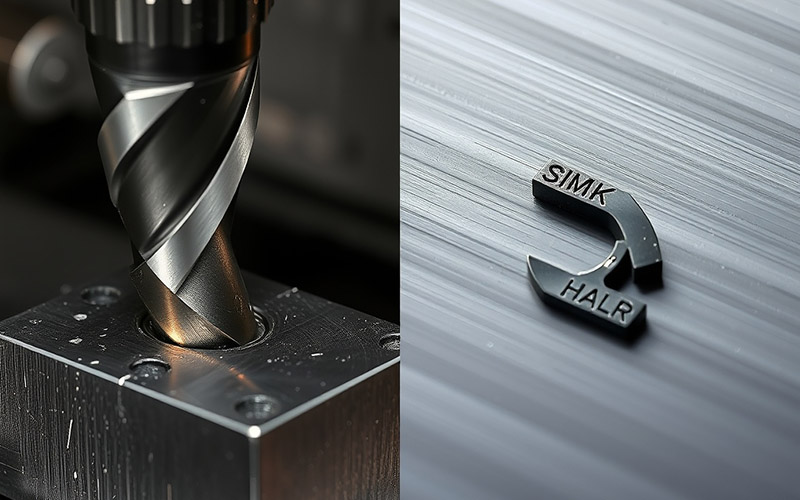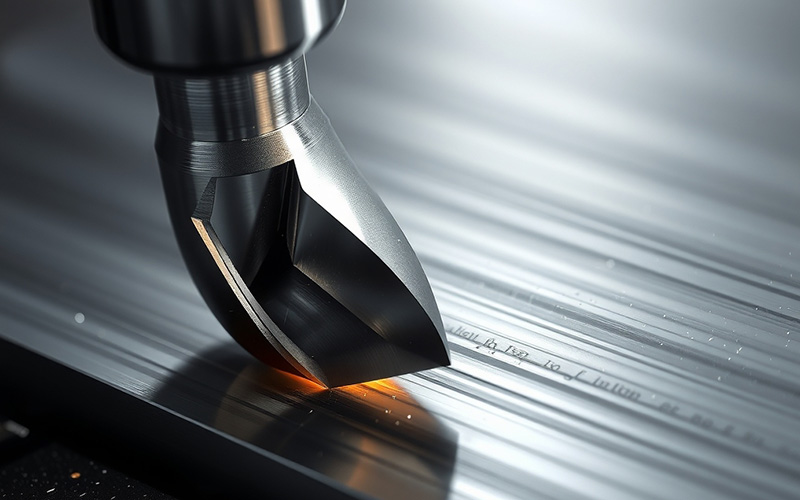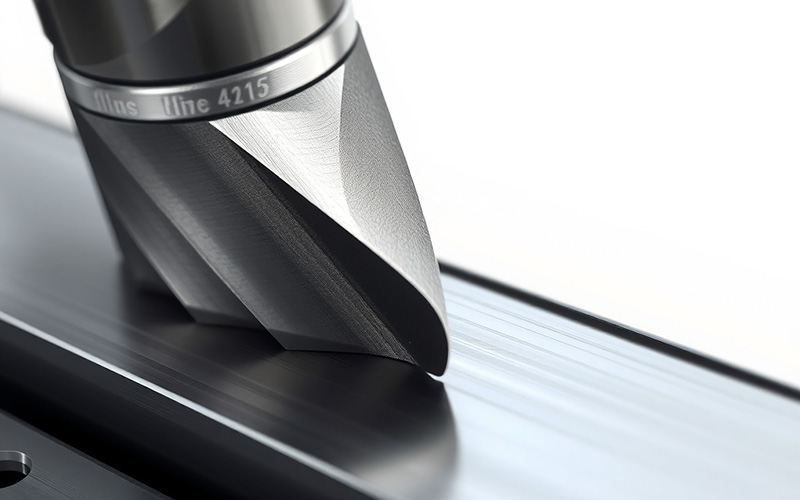Lasciate che Istar vi aiuti a iniziare il vostro progetto con la nostra esperienza e il nostro know-how!
Caricate i file del vostro progetto e i requisiti di produzione e vi risponderemo entro 30 minuti!

In this article, I will tell you what I have learned. I will explain how each way works, when you should use it, and how to stay away from common problems. When you finish reading, you will know how to pick the right cutting process for your work. This will help you get a better surface finish and make your cutting tools last a lot longer.
If you are new to this work, the names “climb mill” and “conventional mill” might sound hard to understand. But the main point is very simple. The big difference between these two ways of milling is all about one thing. It is about how the direction the cutting tool spins relates to the direction the workpiece moves. It is all about the way the cutter touches the material.
You can picture it like this. In one way, the cutter cuts into the workpiece by moving in the opposite direction. It is like a car’s wheels spinning as it tries to go up a hill made of mud. In the other way, the cutter moves in the same direction as the workpiece. This is like a car rolling down that same hill with no trouble. This single, simple difference between climb and conventional milling makes a big change in everything else. It changes the cutting forces. It changes the surface finish of your part. It changes how long your tools last. It even changes how hard your machine has to work. Knowing this is the first thing you need to learn to get better at being a machinist.

Let’s talk about the old-style way first, the one people used to learn at the start. This is the conventional mill. It is also called up milling. In this way of doing things, the cutter rotates against the direction that the workpiece is fed. Let’s say you are pushing a workpiece from the left to the right. With a conventional mill, the sharp part of the tool will be moving from right to left when it touches the material. This was the normal way to do things for a very long time, especially on older machines that you use by hand.
The way a conventional mill cuts is special. The cutting edge begins its cut with no chip thickness at all. It kind of rubs on the workpiece surface for a second. Then it starts to dig in and lift the material up and away. This rubbing makes a lot of heat and friction when the cut starts. This can be hard on your cutting tool. It can also change how good the final surface finish looks. The conventional milling often gives you a rougher surface. This is because the chips are pulled up by the cutter. They can get stuck and get cut again, which scratches the surface you just worked on. For any machinist, it is important to understand the forces in a conventional mill.
Now, let’s look at the other way of doing it: the climb mill. This is sometimes called down milling. It is the complete opposite of a conventional mill. With a climb mill, the cutter rotates con the direction of the feed. If your workpiece is moving from left to right, the teeth of the cutter are also moving from left to right when they touch it. The cutter is basically trying to “climb” on top of the workpiece. That is how it got its name. This way of doing things is very common now, especially with new CNC machines.
The climb mill process is much easier on the cutting tool. The cutting edge starts the cut with the biggest chip thickness and ends with none. It takes a large, clean bite from the very start. This means there is no rubbing. This leads to less heat, less tool wear, and a longer tool life. A climb mill also pushes the chips down and away from the cutter, so they are not cut again. This helps to make a much better surface finish. But, a climb mill has one big problem. It wants to pull the workpiece into the cutter. This can cause very big problems on a machine that has backlash.
To make it simple, I made a small table. It shows the big differences between a climb mill and a conventional mill. As a machinist, I think looking at the climb vs conventional milling question this way helps a lot. This is a good thing to look at for any CNC project.
| Che cos'è | Climb Mill (Down Milling) | Conventional Mill (Up Milling) |
|---|---|---|
| How the Cutter Spins | Spins WITH the workpiece feed. | Spins AGAINST the workpiece feed. |
| How the Chip is Made | Starts thick, ends thin. | Starts thin, ends thick. |
| How the Cut Pushes | Pulls the workpiece into the cutter. | Pushes the workpiece away from the cutter. |
| How Long the Tool Lasts | Usually longer because of less heat and rubbing. | Usually shorter because of rubbing at the start of the cut. |
| How Smooth the Part Is | Smoother, because chips are moved behind the tool. | Can be rougher, because chips might be cut again. |
| What the Machine Needs | Needs a strong machine with no backlash. | Works okay on older machines that have backlash. |
This table gives you the big picture of climb milling vs conventional milling. Picking the right way to do your milling depends on your machine. It also depends on your material and what you want your workpiece to look like. A new CNC machine will almost always work better with a climb mill.
If you want a part to look very good as soon as it comes off the machine, the choice is usually easy to see. A climb mill almost always gives you a better surface finish. The reason for this is easy to understand. It is about how it handles the chips. When you use a climb mill, the cutting action pushes the chips down and behind the cutter. The chips fall away from the workpiece. They do not get in the way of the next cutting edge. This gives you a cut that is more clean and a smoother surface finish. The cutting forces in a climb mill also help to hold the workpiece down on the machine table. This can make things shake less and improve the finish.
On the other hand, a conventional mill usually makes a surface that is not as good. The cutter rotates against the direction of the workpiece. Because of this, it scoops the chips up and throws them in front of where it is cutting. This means the next tooth of the cutter might run over those chips. It can drag them along the surface you just finished. Cutting the same chips again results in a rougher surface. A conventional mill finish pass can sometimes be used. But for a really nice, shiny finish, using climb milling is what I always choose for my CNC machine. This process results in a better surface on things like aluminum.
Every machinist wants their tools to last for a very long time. A new cutting tool can cost a lot of money! This is another spot where the climb mill is really good. The best way to get a longer tool life is by making less heat and rubbing. The climb milling process does this very well. The cutting edge takes a thick chip at the start of the cut. Because of this, it starts cutting material right away instead of rubbing on it. This way of cutting works better and makes less heat. Heat is the worst thing for a cutting tool. Less heat means less tool wear. It also means your tool will last for a longer time.
A conventional mill, however, is a lot harder on your tools. Do you remember how it starts the cut with no chip thickness? This means the cutting edge rubs on the workpiece for a quick moment before it starts to cut. This rubbing makes a lot of heat right on the sharpest part of your cutting tool. Over time, this heat wears out the sharp part of the tool. This leads to faster tool wear. If you have to change your tools a lot, you should check if you can change from a conventional mill to a climb mill. Milling can improve tool life by a lot.
Tool deflection happens when the forces from the cut make the cutting tool or the workpiece bend a little bit. Even a very small amount of bending can mess up how exact your part is. Both ways of milling make cutting forces. But these forces push in different ways. This changes how you have to think about tool deflection. It is a big part of the climb vs conventional milling discussion.
With a conventional mill, the cutting forces usually go from side to side. They try to push the workpiece and the cutter away from each other. At the same time, a force pushes up. This can try to pull the workpiece up off the table. This can be a problem if your part is not held down tightly. On the other hand, a climb mill makes forces that push down. This is good because it helps to hold the workpiece very tight against the machine table. But it can also pull the cutter and the workpiece together. This can make tool deflection worse if you have a setup that is not strong or if you are using a long, thin cutting tool. A strong machine setup is very important when you are using climb milling.
So far, it seems like the climb mill is the best choice. For most jobs on a new CNC machine, it is. But there are certain situations when you really have to use conventional milling. The most important reason is when you are working on materials with a very hard skin on the outside. Examples are hot rolled steel or some kinds of cast iron. This hard outer layer is rough and very hard on your tools.
A climb mill would hit this hard surface from the front. This could chip or break the cutting edge right away. A conventional mill, however, has a good thing going for it here. Its cutting edge starts under the surface of the workpiece. It then cuts up, breaking through that hard layer from the bottom up. This is much easier on the tool. You should also use conventional milling on older manual machines that do not have a backlash eliminator. On these machines, a climb mill can be very unsafe. A conventional mill is a choice that is safer and works better for older machines or for hard materials like cast iron.

I have talked about backlash a few times, so let’s talk more about it. Backlash is a small amount of looseness in the screws that move the table of the machine. On an older machine, if you turn the handle one way and then turn it back, there is a small gap before the table moves again. That small gap is backlash. On a machine you use by hand, a good machinist can work around this backlash. But on a CNC machine, it is not the same.
This is the biggest problem with climb milling. A climb mill has a tendency to pull the table along with the cutter. If there is any backlash in the screws, the cutter can suddenly pull the table across that gap. This makes the tool suddenly cut too deep and take a much bigger piece than it was supposed to. This can break your cutter right away. It can also mess up your workpiece and even hurt your machine. This is why you should never use a climb mill on a machine that has a lot of backlash. New Fresatura CNC machines are made with special parts or computer programs that get rid of backlash. This is what makes it possible to make climb milling work so well. If you do not have a backlash eliminator, you should stick to the conventional mill.
So, how do you make the last decision? For me, I use an easy list of questions. If I am using a new, strong CNC machine that has no backlash, the choice I usually make is always to choose climb. The good things about climb milling are so good that I have to use it. You get a great surface finish, a much longer tool life, and cutting that works better. For almost all of the CNC machined parts I make, from aluminum to steel, the climb mill is the right tool to do the job well.
I only change to a conventional mill for a few special reasons. If the workpiece is a rough part or has a hard, tough surface, I will use a conventional mill for the first rough cut to get under that hard layer. If my setup is not as strong as I want it to be, or if I am using a very long and thin tool, I might think about using a conventional mill. This can lower the chance of the tool getting pulled into the cut. But for almost all of my CNC milling work, the climb mill is the tool I count on to get the job done right. The choice between conventional or climb milling becomes easier as you get more experience. But starting with the climb mill on a good CNC machine is a very good rule to follow.